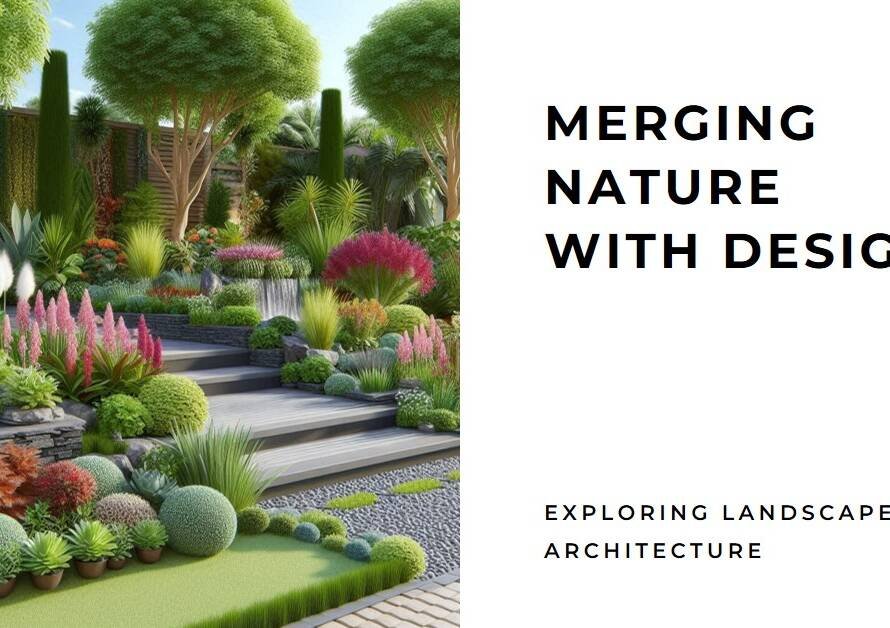
Table of Contents
- Harmonizing Built Spaces with Nature
- The Evolution of Sustainable Architecture
- Innovations in Green Building Materials
- The Rise of Passive Design Strategies
- Integrating Renewable Energy Solutions
- Urban Green Spaces and Vertical Gardens
- Water Conservation Techniques
- The Impact of Building Orientation
- Community-Centric Architectural Designs
- The Future of Environmental Architecture
- Conclusion: The Path Forward
Harmonizing Built Spaces with Nature
In the contemporary world, architecture plays an increasingly critical role in environmental design. By seamlessly integrating buildings with their natural surroundings, architects can significantly mitigate the environmental impact of human activities. This harmonious approach not only enhances aesthetic appeal but also promotes sustainability.
Modern architects are innovating with eco-friendly materials and energy-efficient designs. By using resources like bamboo, recycled steel, and green roofs, they reduce the carbon footprint of new constructions. Moreover, passive solar design, natural ventilation, and efficient water management systems contribute to creating buildings that are as self-sufficient as possible.
The Evolution of Sustainable Architecture
The journey towards sustainable architecture has been long and varied. Initially, the focus was on reducing energy consumption through better insulation and heating systems. However, as the environmental crisis deepened, architects began to embrace a more holistic approach, considering the entire lifecycle of buildings.
Today, the trend has shifted towards creating structures that positively impact the environment. This includes the use of renewable energy sources, such as solar and wind power, and incorporating green spaces within urban settings. These practices not only conserve resources but also create healthier living conditions for residents.
Innovations in Green Building Materials
A significant aspect of environmentally conscious architecture is the selection of building materials. Traditional materials like concrete and steel have high environmental costs, prompting the need for greener alternatives. Innovative materials such as hempcrete, rammed earth, and cross-laminated timber are gaining popularity for their sustainability and durability.
These materials not only reduce the environmental impact but also improve the thermal performance of buildings. For instance, hempcrete provides excellent insulation, reducing the need for artificial heating and cooling. Similarly, rammed earth offers substantial thermal mass, maintaining stable indoor temperatures.
The Rise of Passive Design Strategies
Passive design strategies have revolutionized the field of environmental architecture. These strategies involve designing buildings in a way that minimizes energy consumption by leveraging natural resources. For example, passive solar design uses the sun’s energy for heating and lighting, reducing reliance on artificial sources.
Natural ventilation is another crucial aspect of passive design. By optimizing the orientation and layout of buildings, architects can enhance airflow and maintain comfortable indoor temperatures without mechanical systems. These strategies not only save energy but also create healthier indoor environments.
Integrating Renewable Energy Solutions
Renewable energy integration is a cornerstone of sustainable architecture. By incorporating solar panels, wind turbines, and geothermal systems, architects can create buildings that generate their own energy. This not only reduces dependency on fossil fuels but also lowers operational costs over time.
Solar energy is particularly popular due to its versatility and accessibility. Photovoltaic panels can be installed on rooftops, facades, and even windows, converting sunlight into electricity. Wind turbines, though more site-specific, can also provide substantial energy for buildings located in windy areas.
Urban Green Spaces and Vertical Gardens
Incorporating green spaces within urban environments is essential for promoting biodiversity and improving air quality. Vertical gardens and green roofs are innovative solutions that bring nature into densely populated areas. These features not only enhance the aesthetic appeal of buildings but also provide insulation, reducing energy consumption.
Vertical gardens, in particular, offer numerous environmental benefits. They act as natural air filters, absorbing pollutants and releasing oxygen. Additionally, they can reduce the urban heat island effect, making cities more comfortable during hot weather. Green roofs also manage stormwater runoff, preventing flooding and reducing the burden on urban drainage systems.
Water Conservation Techniques
Water scarcity is a growing concern worldwide, and architects play a crucial role in addressing this issue through innovative design. Rainwater harvesting, greywater recycling, and efficient irrigation systems are some of the techniques used to conserve water in buildings.
Rainwater harvesting involves collecting and storing rainwater for various uses, such as irrigation and flushing toilets. Greywater recycling, on the other hand, treats wastewater from sinks and showers, making it suitable for non-potable uses. These systems not only conserve water but also reduce the demand on municipal water supplies.


The Impact of Building Orientation
The orientation of a building significantly influences its energy efficiency. By strategically positioning a structure to maximize natural light and ventilation, architects can reduce the need for artificial lighting and climate control. South-facing windows, for instance, can capture maximum sunlight during the winter, providing natural heating.
Furthermore, proper orientation can enhance the effectiveness of passive solar design and natural ventilation strategies. By aligning buildings to take advantage of prevailing winds, architects can ensure a steady flow of fresh air, reducing the reliance on mechanical ventilation systems. This approach not only conserves energy but also improves indoor air quality.
Community-Centric Architectural Designs
Sustainable architecture extends beyond individual buildings to encompass entire communities. Community-centric designs prioritize shared spaces, public transportation, and pedestrian-friendly environments. This holistic approach fosters a sense of community while reducing the overall environmental impact.
For example, eco-villages and cohousing communities are designed with sustainability in mind. These developments often include shared gardens, renewable energy systems, and communal facilities, encouraging residents to adopt eco-friendly lifestyles. By promoting social interaction and resource sharing, community-centric designs contribute to a more sustainable and resilient society.
The Future of Environmental Architecture
The future of environmental architecture lies in the continued innovation and adoption of sustainable practices. As technology advances, architects will have access to new tools and materials that further reduce the environmental impact of buildings. Additionally, the integration of smart systems and data analytics will enable more efficient energy management and resource use.
Public awareness and policy support are also crucial for driving the adoption of sustainable architecture. Governments and organizations must continue to incentivize green building practices through regulations, subsidies, and certifications. By fostering a culture of sustainability, we can ensure that future developments contribute positively to the environment.
Conclusion: The Path Forward
Architecture’s role in environmental design is more critical than ever as we face global environmental challenges. By embracing sustainable practices, architects can create buildings that harmonize with nature, conserve resources, and promote healthier living conditions. The journey towards a sustainable future requires collaboration, innovation, and a commitment to integrating environmental considerations into every aspect of architectural design.
As we look ahead, it is essential to continue exploring new ways to minimize the environmental impact of our built environment. Through thoughtful design, the use of renewable resources, and community engagement, architecture can lead the way in creating a sustainable and resilient future for all.


